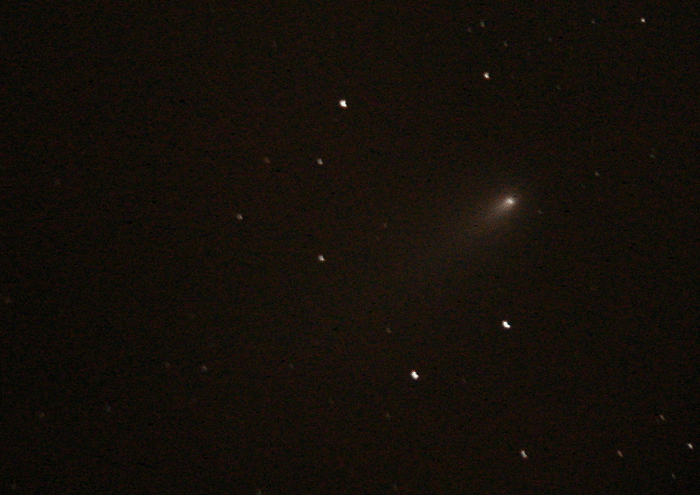
This sequence of 11 telescopic
images of one part of Comet Schwassmann-Wachmann 3
shows its slow movement against the background stars over a period of 11
minutes on the evening of April 29, 2006. This comet was discovered in 1930, and it orbits the Sun once every 5.34
years, so it is called a periodic comet. During its approach to the Sun in 1995, the comet broke into several
pieces, and one of the two largest pieces is seen in these pictures. In the spring of 2006, the two
largest pieces looked like two separate comets several degrees apart in the
sky, each sporting its own tail. A
few smaller pieces were observed as well. Some of these pieces were seen breaking up into many smaller parts. It should be interesting to see what is
left of the comet when it next approaches the Earth in 2011.